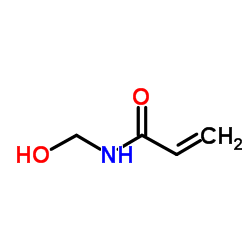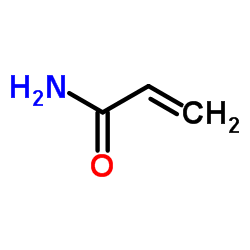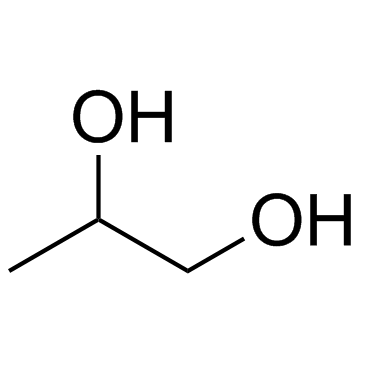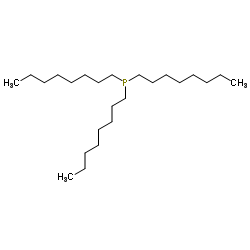110-26-9
| Name | N,N'-Methylenebisacrylamide |
|---|---|
| Synonyms |
Methylene bisacrylamide
N,N′-Methylenebisacrylamide N,N′-methylenediacrylamide N,N'-Methylenebisacrylamide N,N‘-Methylenebisacrylamide N,N-Methylenebisacrylamide EINECS 203-750-9 N,N'-Methylenediacrylamide N,N'-Methylenebis(2-propenamide) MFCD00008625 Bis-acrylamide N,N'-Methylenebis(acrylamide) N,N′-methylene-bis-acrylamide 1U1VM1MV1U1 2-Propenamide, N,N'-methylenebis- N,N'-methanediylbisprop-2-enamide N-[(prop-2-enoylamino)methyl]prop-2-enamide |
| Description | N,N'-Methylenebisacrylamide is a biochemical reagent that can be used as a biological material or organic compound for life science related research. |
|---|---|
| Related Catalog |
| Density | 1.1±0.1 g/cm3 |
|---|---|
| Boiling Point | 445.1±41.0 °C at 760 mmHg |
| Melting Point | >300 °C(lit.) |
| Molecular Formula | C7H10N2O2 |
| Molecular Weight | 154.167 |
| Flash Point | 215.0±27.8 °C |
| Exact Mass | 154.074234 |
| PSA | 58.20000 |
| LogP | -1.44 |
| Vapour density | 5.31 (vs air) |
| Vapour Pressure | 0.0±1.1 mmHg at 25°C |
| Index of Refraction | 1.475 |
| Storage condition | 2-8°C |
| Water Solubility | 0.01-0.1 g/100 mL at 18 ºC |
CHEMICAL IDENTIFICATION
HEALTH HAZARD DATAACUTE TOXICITY DATA
MUTATION DATA
|
| Symbol |

GHS07 |
|---|---|
| Signal Word | Warning |
| Hazard Statements | H302-H332 |
| Personal Protective Equipment | Eyeshields;Faceshields;Gloves;half-mask respirator (US);multi-purpose combination respirator cartridge (US) |
| Hazard Codes | Xn:Harmful |
| Risk Phrases | R20/21/22 |
| Safety Phrases | S22-S36/37 |
| RIDADR | UN 2811 |
| WGK Germany | 2 |
| RTECS | AS3678000 |
| Packaging Group | III |
| Hazard Class | 6.1(b) |
| HS Code | 2924199090 |
|
~% 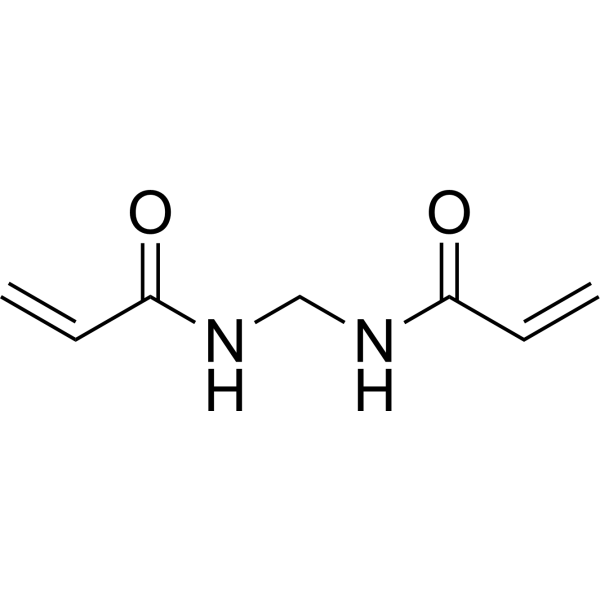
110-26-9 |
| Literature: Journal of the American Chemical Society, , vol. 75, p. 5027 |
|
~% 
110-26-9 |
| Literature: Journal of the American Chemical Society, , vol. 75, p. 5027 US2475846 , ; |
|
~% 
110-26-9 |
| Literature: US4874822 A1, ; |
|
~% 
110-26-9 |
| Literature: Journal of the American Chemical Society, , vol. 73, p. 1028 |
|
~% 
110-26-9 |
| Literature: Journal of the American Chemical Society, , vol. 73, p. 1028 |
| Precursor 8 | |
|---|---|
| DownStream 1 | |
| HS Code | 2924199090 |
|---|---|
| Summary | 2924199090. other acyclic amides (including acyclic carbamates) and their derivatives; salts thereof. VAT:17.0%. Tax rebate rate:13.0%. . MFN tariff:6.5%. General tariff:30.0% |

